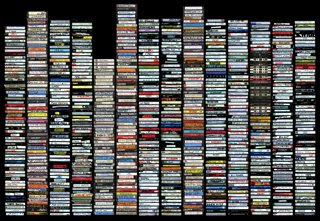

 Fresh Meat
Fresh Meat curated by Stephan Apicella-Hitchcock
September 19 – December 20, 2003
Opening reception September 19 from 5:30 – midnight
CEPA Gallery617 Main Street, Suite 201
Buffalo, NY 14203
Including:
Matt Bakkom, Michael Bell-Smith, Beth Campbell, Dylan Chandler, Irvin Coffee, Jennifer Dalton, Peter Eide, Michelle Elzay, Eteam, Christopher Frederick, Mattias Geiger, Susan Graham, Kira Lynn Harris, Tina Hejtmanek, Adam Henry, Christopher Ho, Sigrid Jakob, Tom Kehn, Kaitlin Kehnemuyi, Dina Kelberman, Megan Lang, Daniel Lefcourt, Kristin Lucas, Dora Malech, Alicia Marin, Felicia McCoy, Glynnis McDaris, Joe McKay, Saul Metnick, Mario M. Muller, Laurel Nakadate, Christian Nugyen, Danica Phelps, Eileen Quinlan, Walid Ra'ad, Douglas Ross, Casey Ruble, Adina Segal, Shelter Serra, James Sheehan, Penelope Umbrico, Elizabeth Valdez, Sue Wrbican, Brennen Wysong
CEPA Gallery is pleased to present
Fresh Meat, featuring 44 New York City based artists that were invited to participate in an exhibition with no overt theme or preset guidelines. As a result, each artist simultaneously constructed the exhibition context as well as contributed the content itself. Artists were selected for their ability to develop a solution to this Rorschach-like problem. Rather than compiling passive objects under a fixed curatorial vision,
Fresh Meat emphasizes that artworks can actively imply their own context of display.
The exhibition highlights the fluid nature of the curatorial process in that the curator occupies the same position as the prospective audience. Neither are privileged with prior knowledge of the final form of the exhibition; both are asked to perform a function similar to a forensic pathologist, retroactively constructing a narrative cause (the exhibition’s parameters) from a set of given clues (the artwork).
As the coupled words in the show title hint, the exhibition stands at the end of one arc – with a sense of finality – and at the beginning of a new one that remains open. By bringing together artists in an adaptable and investigational manner,
Fresh Meat affirms CEPA’s long-standing commitment to the promise of the photographic arts.
Suggestions: some samplers come with a sensible guide printed on the reverse of the closure, while other assortments incorporate an elaborate brochure into their informational scheme. Whether you are given one as a token of appreciation for your virtuous deeds, slipped one by a clandestine admirer, or you formulate a bold resolution to procure one for yourself, boxes of chocolates, although enchanting, remain a mystery to the majority of people.
Randomly choose a piece, or rely upon your memory of your last experience in guiding your decision (I recall that round or oblong shapes are soft-centered creams; square or rectilinear shapes are chewy caramel or nougat; and bumps indicate nuts of some sort, perhaps even coconut). Sniff it first and then deftly nibble the bottom off to peek inside. Is it butter crème? Yellowish, milky, cloyingly sweet, and so stinging the teeth so that you can’t even swallow it? Take a handkerchief and wipe your tongue clean of the gummy sweetness. It might not be the one for you. It might leave a slick glaze that would continue to objectionably loiter in your mouth for the remainder of the day. Take the upper portion of the chocolate – the uneaten section – and drop it back into the fancy box, chewed side down. Start again with another until you are satisfied.


















































